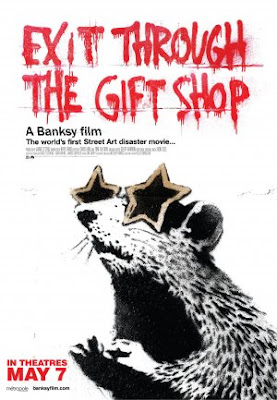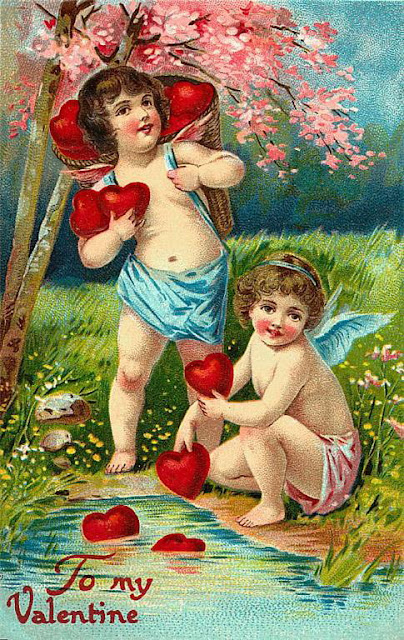Exit Through the Gift Shop
This is the inside story of Street Art - a brutal and revealing account of what happens when fame, money and vandalism collide. Exit Through the Gift Shop follows an eccentric shop-keeper turned amateur film-maker as he attempts to capture many of the world's most infamous vandals on camera, only to have a British stencil artist named Banksy turn the camcorder back on its owner with wildly unexpected results.
One of the most provocative films about art ever
made, Exit Through the Gift Shop is a fascinating study
of low-level criminality, comradeship and incompetence.
By turns shocking, hilarious and absurd, this is an
enthralling modern-day fairytale... with bolt cutters.
This Oscar nominated documentary is a must see for artists and art critics alike. This film will have you thinking......who & what makes art?
Click Here To See the Work of British Street Artist Banksy
Monday, February 28, 2011
Friday, February 25, 2011
Coffee Please?
In 2009, at the Aroma Festival at The Rocks in Sydney, Australia (an annual coffee festival), organizers used 3,604 cups of coffee — four shades using different amounts of coffee and milk — to make a replica of Leonardo da Vinci's Mona Lisa.
The next time you ask for cream & sugar what "value" will you be drinking?
Saturday, February 19, 2011
Youth Scholarship Competition
MAC Annual Scholarship Competition!
SATURDAY MARCH 19, 2011
-Open to all Youth grades 1-12
-Each student who wants to enter should submit one 8 1/2" x 11" drawing
-Drop Entries off at the MAC
130 N. Verity Parkway Middletown, OH
-Entries are due on or before Thursday, March 3rd
-The MAC's instructors will screen the preliminary work and select approximately 90 students to compete on March 19th. Those students will be notified by mail regarding the time schedule for the competition.
If you have any questions please contact Leslie Pinto at lpinto@middletownartscenter.com
SATURDAY MARCH 19, 2011
-Open to all Youth grades 1-12
-Each student who wants to enter should submit one 8 1/2" x 11" drawing
-Drop Entries off at the MAC
130 N. Verity Parkway Middletown, OH
-Entries are due on or before Thursday, March 3rd
-The MAC's instructors will screen the preliminary work and select approximately 90 students to compete on March 19th. Those students will be notified by mail regarding the time schedule for the competition.
If you have any questions please contact Leslie Pinto at lpinto@middletownartscenter.com
Monday, February 14, 2011
The Art of the Valentines Day Card
Valentine's Day reached its height of celebration in the Victorian Era.
Valentine cards were more cherished that Christmas cards (which weren't printed commercially until 1846), perhaps because of the sentimentality attached to them. Due to this popularity, designing cards became a highly competitive market, with a vast array of motifs and verses. Suddenly, cards were being produced in tens of thousands, from whimsy and slightly vulgar, to truly sentimental, their designs included lace paper, embossed envelopes, glass or metal mirrors, ribbons, dried ferns and fake advertisements, bank notes and marriage licenses.
Valentine cards were so popular that their production became a flourishing trade amongst cheapjack printers in central London. Commercially printed valentine cards quickly superseded home-made offerings of earlier times. They reached the height of their popularity during the 1870s and 80s. Yet even though they were mass-produced, they still featured birds with real feathers, posies of dried flowers and spun-glass hearts, all trimmed with ribbons and gold lace.
Some valentines were so thick with embellishments, they came in presentation boxes. Some unfolded like fans, while mechanical valentines had levers or disks which made figures dance, hands move and birds flutter their wings. But as times changed, so did customs. And as less became more on the advent of World War I, valentine cards became a dying art.
Valentine cards were more cherished that Christmas cards (which weren't printed commercially until 1846), perhaps because of the sentimentality attached to them. Due to this popularity, designing cards became a highly competitive market, with a vast array of motifs and verses. Suddenly, cards were being produced in tens of thousands, from whimsy and slightly vulgar, to truly sentimental, their designs included lace paper, embossed envelopes, glass or metal mirrors, ribbons, dried ferns and fake advertisements, bank notes and marriage licenses.
Valentine cards were so popular that their production became a flourishing trade amongst cheapjack printers in central London. Commercially printed valentine cards quickly superseded home-made offerings of earlier times. They reached the height of their popularity during the 1870s and 80s. Yet even though they were mass-produced, they still featured birds with real feathers, posies of dried flowers and spun-glass hearts, all trimmed with ribbons and gold lace.
Some valentines were so thick with embellishments, they came in presentation boxes. Some unfolded like fans, while mechanical valentines had levers or disks which made figures dance, hands move and birds flutter their wings. But as times changed, so did customs. And as less became more on the advent of World War I, valentine cards became a dying art.
Monday, February 7, 2011
Play With Your Food?
Did your mother ever tell you "Stop Playing With Your Food!"............Well Saxton Freymann and Joost Elffers clearly did not listen.
Check out their whimsical images of food play taken from their various books.
Check out their whimsical images of food play taken from their various books.
Friday, February 4, 2011
Jonathan Green
Celebrate Black History Month!
Jonathan Green has a passion for creating and collecting cross-cultural fine art representing the themes of work, love, belonging and spirituality. He is also committed to promoting cross cultural arts to be included in mainstream museums throughout the United States and Europe.
He has a drive to enhance the visibility, perceptions, and recognition of professional visual artists of African American, Caribbean, Latin American descent for their cultural contributions to this nation. He strives to show such contributions as they are specifically noted in the use of the artists’ creations in the areas of education, health, performing arts, business, and the environment.
Subscribe to:
Posts (Atom)









